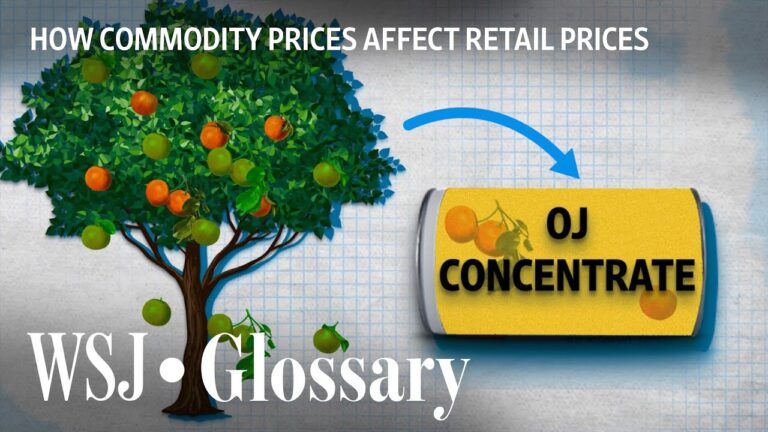Introduction
Commodity markets play a crucial role in the global economy, facilitating the trade of raw materials and primary agricultural products. These markets provide a structured platform where buyers and sellers can engage in transactions, either for immediate delivery (spot markets) or for future delivery (futures markets). Commodities are broadly classified into hard and soft commodities, with hard commodities including metals, oil, and natural gas, while soft commodities cover agricultural products such as wheat, coffee, and cotton. Understanding how commodity markets work is essential for investors, businesses, and policymakers as these markets influence prices, supply chains, and global trade dynamics.
What Are Commodities?
Commodities are basic goods that are interchangeable with other goods of the same type. They are typically used as inputs in the production of other goods or services. Commodities can be classified into several categories:
- Agricultural Commodities: Corn, wheat, soybeans, coffee, sugar, cotton.
- Energy Commodities: Crude oil, natural gas, coal, gasoline.
- Metal Commodities: Gold, silver, copper, platinum.
- Livestock and Meat: Live cattle, lean hogs, feeder cattle.
The Structure of Commodity Markets
Commodity markets operate in two primary forms:
- Spot Markets: These are markets where commodities are traded for immediate delivery and payment. The price in a spot market is known as the spot price.
- Futures Markets: Futures contracts are agreements to buy or sell a commodity at a predetermined price at a future date. These markets provide liquidity, price discovery, and risk management for producers and consumers.
Key Participants in Commodity Markets
Commodity markets consist of various participants, each playing a significant role in the trading ecosystem:
- Producers: Farmers, mining companies, and oil drillers who produce raw materials and seek to sell them at the best possible price.
- Consumers: Industries and manufacturers that purchase commodities to use as inputs in production.
- Speculators: Investors who buy and sell commodity contracts to profit from price fluctuations.
- Hedgers: Businesses that use futures contracts to hedge against price volatility and protect themselves from adverse price movements.
- Brokers and Exchanges: Facilitators of commodity trading, such as the Chicago Mercantile Exchange (CME), London Metal Exchange (LME), and Intercontinental Exchange (ICE).
How Commodity Prices Are Determined
Commodity prices are influenced by a variety of factors, including:
- Supply and Demand: The fundamental driver of commodity prices. High demand and low supply drive prices up, while surplus supply and low demand drive prices down.
- Geopolitical Events: Conflicts, trade wars, and political instability can affect commodity availability and pricing.
- Weather Conditions: Agricultural commodities are particularly sensitive to climate patterns, droughts, and natural disasters.
- Macroeconomic Indicators: Inflation, interest rates, and global economic growth impact commodity prices.
- Currency Strength: Since most commodities are traded in U.S. dollars, fluctuations in currency values affect commodity prices.
- Market Speculation: Traders and investors engaging in futures and options trading can create short-term price volatility.
Types of Commodity Trading
There are multiple ways commodities can be traded:
- Futures Contracts: Agreements to buy or sell a commodity at a fixed price on a future date. These are standardized contracts traded on exchanges.
- Options on Futures: Contracts that give the holder the right, but not the obligation, to buy or sell a futures contract at a specified price.
- Exchange-Traded Funds (ETFs): These allow investors to gain exposure to commodity prices without directly trading futures.
- Spot Trading: Buying and selling commodities for immediate delivery.
- Commodity Mutual Funds and Index Funds: These funds provide exposure to a diversified basket of commodities.
Commodity Exchanges
Major commodity exchanges facilitate trading and ensure price transparency and liquidity. Some of the most prominent exchanges include:
- Chicago Mercantile Exchange (CME) – Trades futures and options for a wide range of commodities.
- New York Mercantile Exchange (NYMEX) – Specializes in energy and metals commodities.
- London Metal Exchange (LME) – The primary marketplace for industrial metals.
- Intercontinental Exchange (ICE) – Handles agricultural and energy commodities.
- Multi Commodity Exchange (MCX) – India’s leading commodity derivatives exchange.
The Role of Commodity Markets in the Economy
Commodity markets serve multiple functions that are critical to the global economy:
- Price Discovery: Futures markets help in determining the future price of commodities based on supply-demand expectations.
- Risk Management: Hedging mechanisms protect producers and consumers from extreme price fluctuations.
- Market Liquidity: Well-functioning commodity markets allow participants to enter and exit positions efficiently.
- Economic Indicators: Commodity prices often serve as indicators of economic health, inflation, and global trade trends.
- Investment Opportunities: Commodities provide diversification for investment portfolios, offering a hedge against inflation and currency devaluation.
Risks in Commodity Trading
Commodity trading, while lucrative, comes with several risks:
- Volatility Risk: Prices can fluctuate dramatically due to external factors.
- Leverage Risk: Futures trading involves leverage, amplifying gains and losses.
- Supply Chain Disruptions: Natural disasters, pandemics, and logistical issues can disrupt supply chains.
- Regulatory Risk: Government interventions, such as tariffs and export bans, can impact commodity prices.
- Geopolitical Risk: Wars, trade restrictions, and political instability can influence commodity flows.
Conclusion
Commodity markets are a fundamental part of the global financial system, affecting businesses, investors, and consumers alike. They provide a platform for price discovery, hedging, and speculation, influencing economic trends and trade patterns. Understanding the dynamics of these markets—from how they operate to the risks and opportunities they present—empowers individuals and organizations to make informed decisions. Whether one is an investor looking to diversify, a producer seeking stability, or a policymaker monitoring inflation, commodity markets play an indispensable role in shaping economic realities.
You may also like the below


